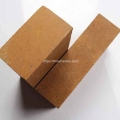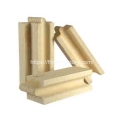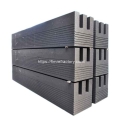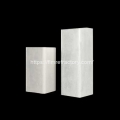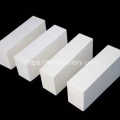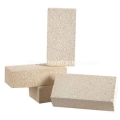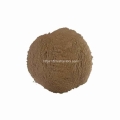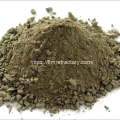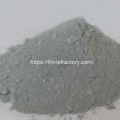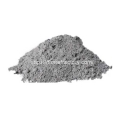- Performance. Innovation. Worldwide. Your trustworthy Refractories Manufacturing Partner--Fireramo
- +86 175 3769 7777
Contact
Contact us on WhatsApp
High Quality Refractory Bricks
Insulation Bricks for Sale
Monolithic Refractory
How to choose the suitable refractory material?
Refractories play a key role in various high temperature industrial equipment. Refractories are an essential part of high-temperature industrial production, in order to ensure the normal operation of industrial production and extend its service life, it is crucial to choose the right refractory materials. Fireramo will introduce the selection of refractory materials to help readers from the use of refractory materials, physical properties and other seven aspects of the selection of suitable refractory materials.

I. Refractories to meet the conditions of use
When choosing refractory materials, the first thing to consider is the use of high-temperature industrial equipment conditions. Understanding the process conditions of the equipment is the basis for selecting the appropriate refractory materials. Consider the nature of the material, the temperature range, the rate of temperature change, the atmosphere (oxidizing, reducing, acidic, alkaline, etc.) and pressure and other factors.
Different industrial furnace conditions require different performance of refractory materials, so these factors should be fully considered when selecting refractory materials. For example, high-temperature furnaces need to choose refractories with high refractoriness and good thermal shock resistance; alkaline atmosphere of the furnace needs to choose the alkaline resistance refractories with strong erosion capacity.
II. Consider the working temperature
Determine the operating temperature range of the equipment is the key factor in the selection of refractory materials. Refractories must be able to withstand long periods of high-temperature operation without thermal melting, softening or breaking.
According to the working temperature selection of refractory refractoriness, to ensure that it can work stably at the required temperature. Such as metallurgical furnaces, glass furnaces, etc., the working temperature is high, requiring refractory materials with high temperature resistance and thermal shock stability, often choose high aluminum or carbon materials.
III. Comprehensive physical properties
The physical properties of refractory materials play an important role in their service life and performance. Consider thermal shock stability, thermal conductivity, thermal expansion coefficient, compactness and porosity and other factors. Thermal shock stability determines the anti-cracking performance of the material when the temperature changes, thermal conductivity determines the thermal effect and energy efficiency of the material, while the compactness and porosity will affect the material’s resistance to erosion and thermal conductivity.
IV. Consider chemical properties
Select the appropriate refractory material according to the working environment of the equipment. Different working environments may include acidic, alkaline or contain corrosive substances, etc.. The refractory material also has two kinds of acidic refractory material and alkaline refractory material. Select refractory materials that are resistant to acid and alkaline attack based on the chemical properties of the environment in which they are used. Select materials compatible with the working environment to ensure their service life and performance under harsh conditions.
V. Type of refractory material
Select the appropriate refractory material according to the type of equipment and requirements. Common refractory materials include high-aluminum materials, silica materials, magnesium materials, carbon materials, etc., and there are refractory bricks, heat-insulating bricks, unshaped refractory material, fiber refractory materials and other different forms. Different types of materials have different advantages and scope of application, according to the specific needs for selection. For example, high aluminum material is suitable for high temperature and acidic environment, silicon material is suitable for high temperature and alkaline environment, the construction of kiln with get refractory bricks and unshaped refractory material.
VI. Cost and Availability
The selection of refractory materials should also consider the cost and reliability of supply of refractory materials. Make sure that the selected refractory material meets the budget and can be supplied in a timely manner. fireramo, as a leader in refractory materials in China, provides you with high-quality refractory materials, and we are also your reliable partner.
VII. Maintenance and Replacement
Understand the life and replacement cycles of refractory materials in order to plan and predict maintenance work and downtime. Choosing refractory materials with longer life and replacement cycles can reduce downtime and maintenance costs.
Selecting the right refractory material is a key factor in ensuring the proper operation of high temperature industrial equipment. fireramo has listed the main points needed to select a refractory material, taking into account the seven aspects of refractory material, such as process conditions, operating temperatures, physical properties, and chemical properties. If you still have any difficulties in choosing refractory materials, please contact us for free help! As a supplier of refractory materials in China, we are glad to solve any problems about refractory materials for you.
Specializing in refractory materials for over 20 years, we provide professional refractory solutions for the global high temperature industry.
Related Posts:
- Causes and solutions to cracking of castables after baking
- Enhancing the Medium Temperature Strength of Refractory Castables
- Ways to ensure the accuracy of refractory brick acceptance results
- Acceptance inspection after cement kiln construction
- Three Common Ways of Damage to the Sliding Nozzle for Ladles
Theme By Fireramo
